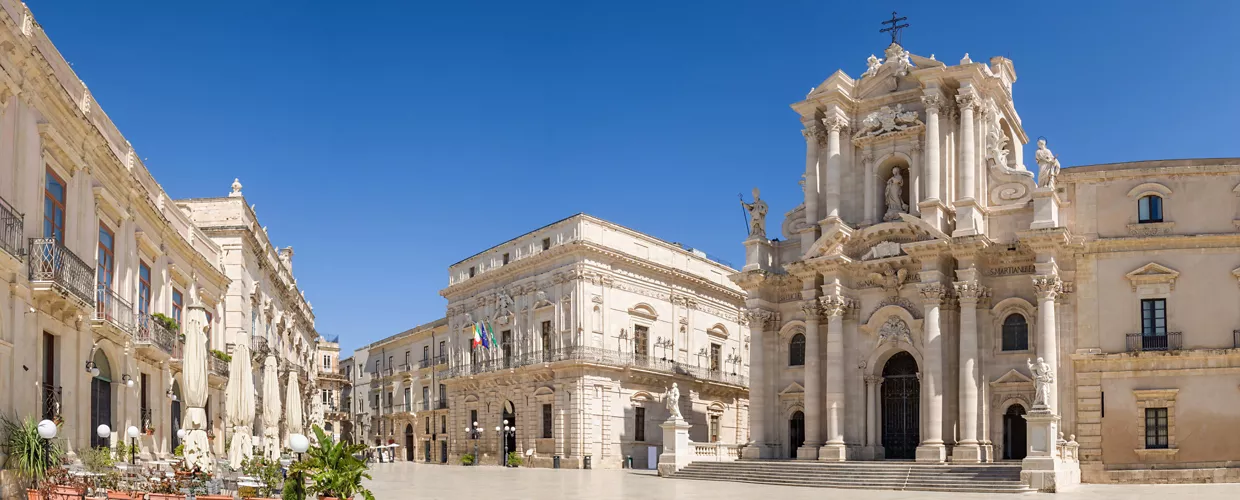This content was automatically translated. View the original text.

Overview
The city of Syracuse is located in one of the most beautiful inlets on the Mediterranean. It is a vital and dynamic city, worthy of its great past, and in 2005 was duly recognised as a UNESCO World Heritage Site. A visit to Syracuse is a journey back in time and to discover the wonderful beauty of the natural environment in which the city is immersed. Syracuse has given rise to great figures of the cultural and artistic history of the Mediterranean and still has a very lively intellectual life. Archaeological evidence confirms human presence on the island of Ortigia as early as the 14th century BC, although urban construction dates back to the 8th century BC, with the foundation of the Greek colony of Syracuse. The political and economic growth of the city between the 6th and 4th centuries BC led to an increase in the number of inhabitants and the expansion of the city beyond the primitive walls. Having grown too large to be properly defended, Syracuse suffered enemy incursions from the hinterland and was besieged by the Athenians (416-13 BC). The war against Carthage in 405 BC placed the city in the hands of Dionysius I, who was forced to carry out major fortification works, remove the population from Ortigia and turn the island into a fortress for military purposes. The death of Dionysius around the middle of the 4th century started a long period of transition, which led to the defeat and sacking of the city by the Romans in 212 BC. Christianity had been spreading since the first centuries of the empire and the first buildings of early Christian worship began to appear in the third century. After a long siege, in 878 the city was taken and devastated by the Arabs, who, nevertheless, left a strong mark of their presence on its layout. Having finally the Arabs from the island, the Normans completed the work begun by the Byzantines, with their renovation of the ancient fortifications. The Aragonese government brought Syracuse considerable economic advantages, which left their mark in the construction of the ramparts that surround the island and of many buildings. The dramatic earthquake that struck in 1693 was a decisive event in the city's history, not because it caused irreparable damage but as the impetus for a Baroque-style restructuring, which gave the city an 18th-century appearance in place of its ancient identity. The city layout was then significantly altered by gutting operations during the fascist era, particularly the construction of Via del Littorio, the present-day Corso Matteotti. The economic expansion of the 1950s and ’60s heralded a period of coexistence with large industrial complexes, which was not always easy or lucrative. This sequence of often traumatic events has had a fascinating overlapping effect, in the form of a harmonious integration.
96100 Siracusa SR, Italia